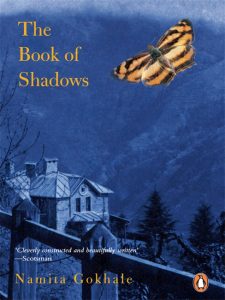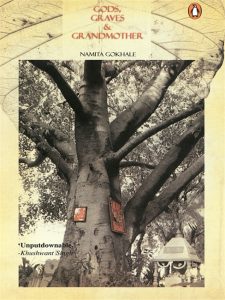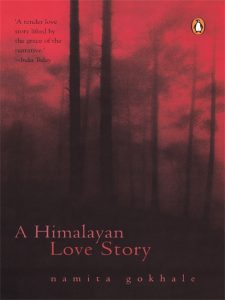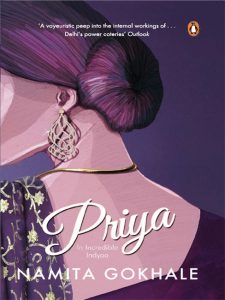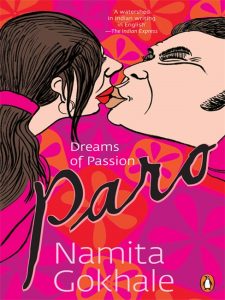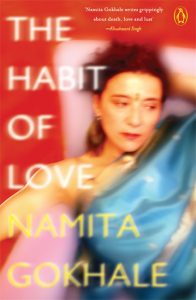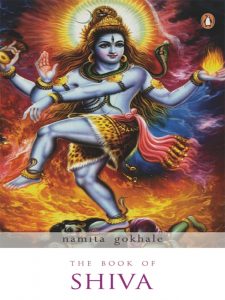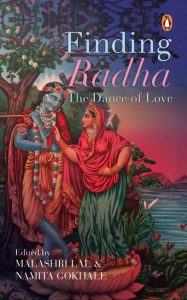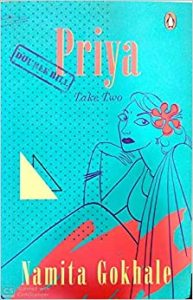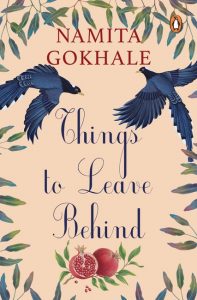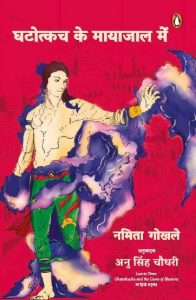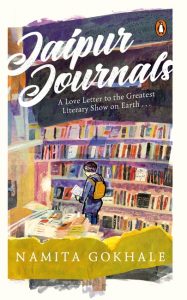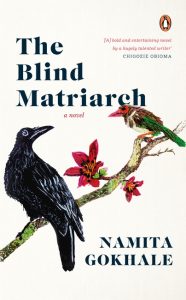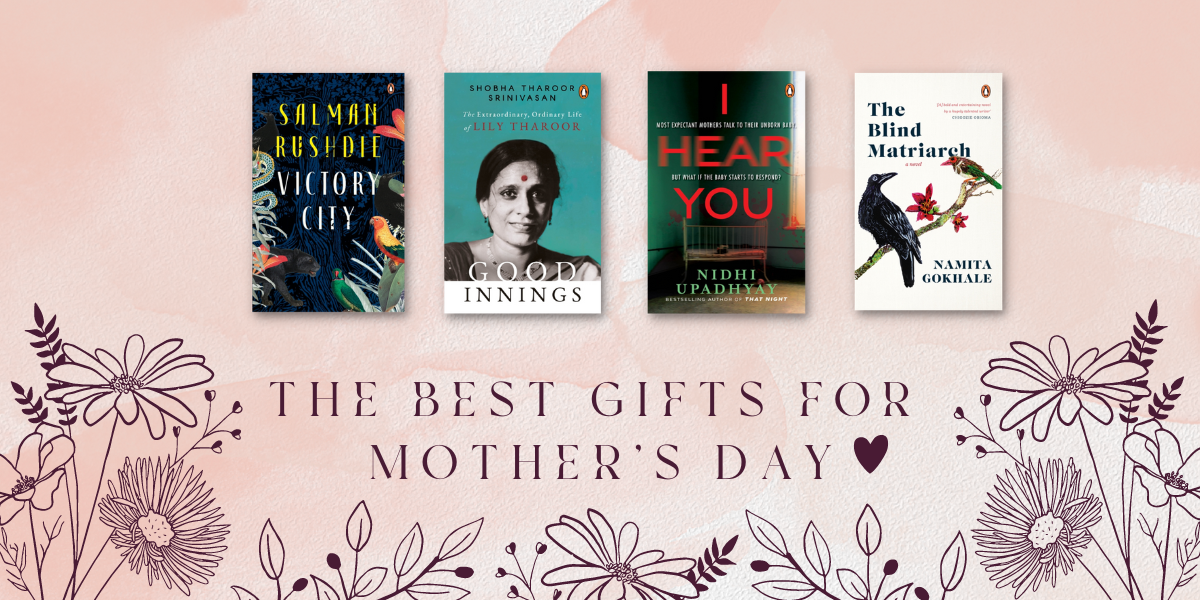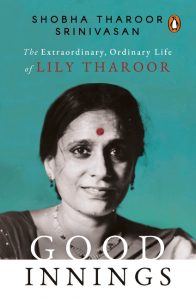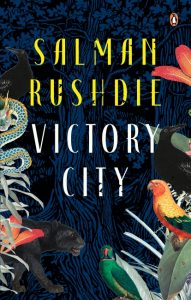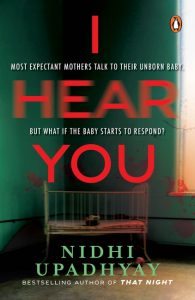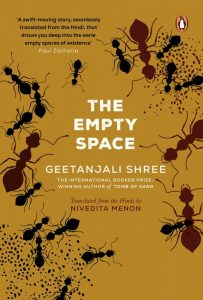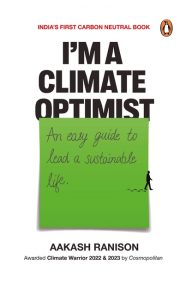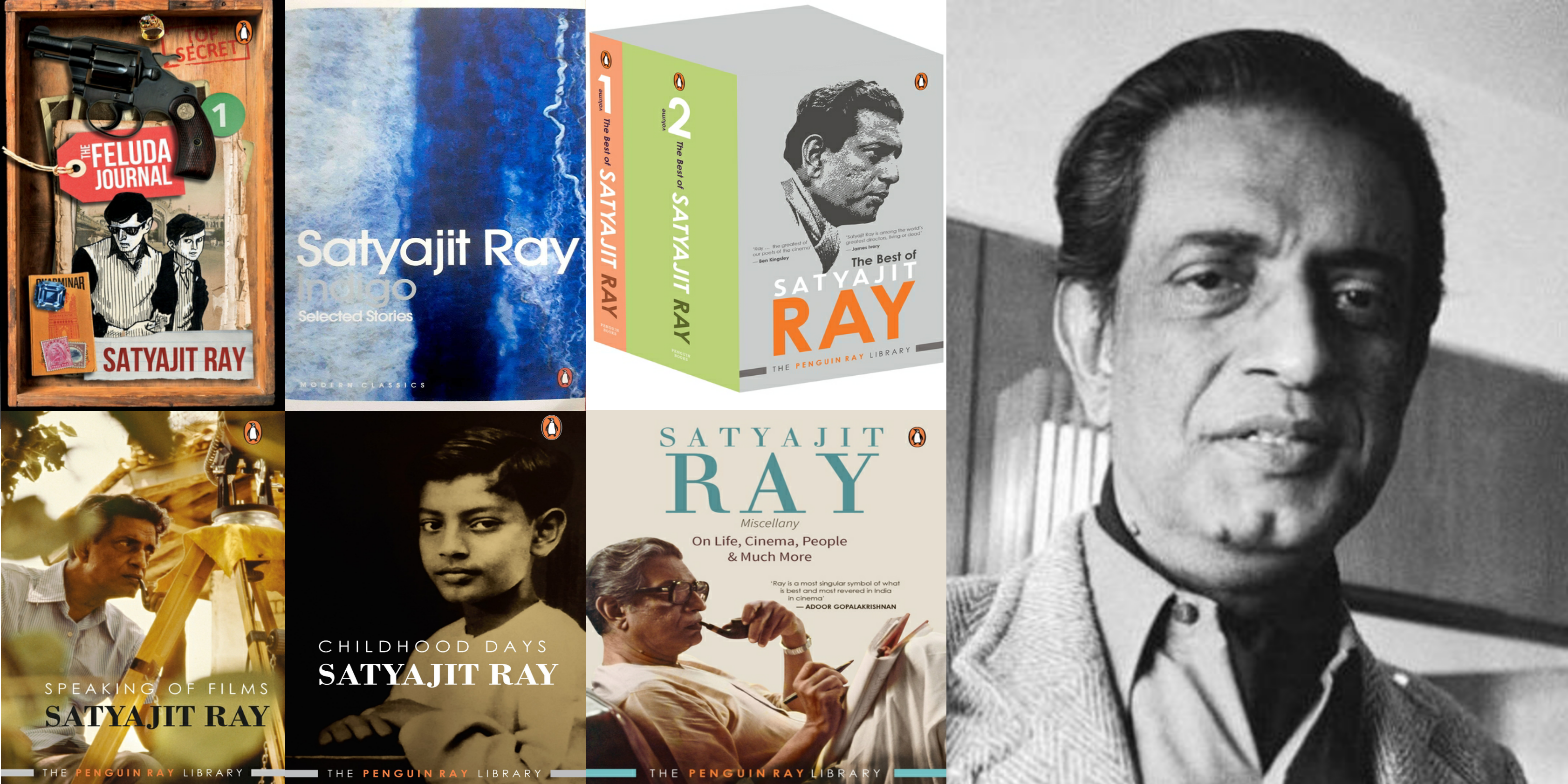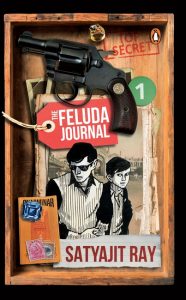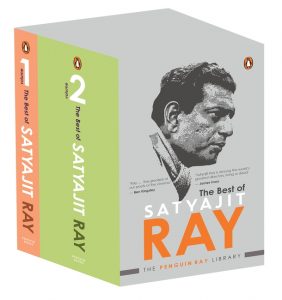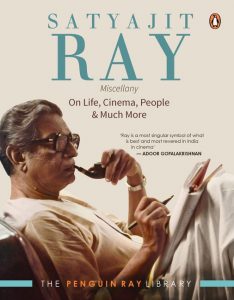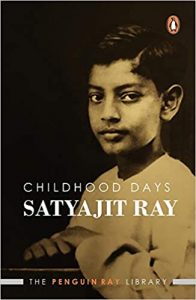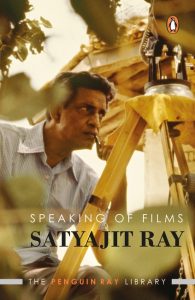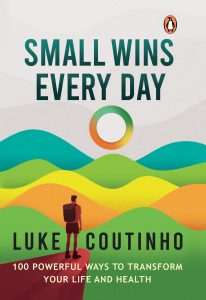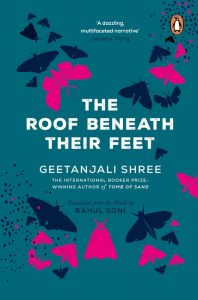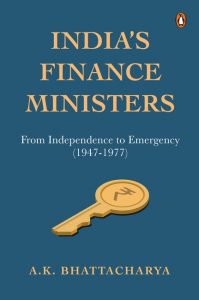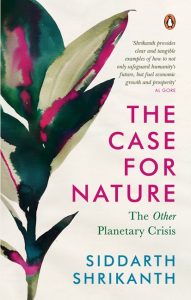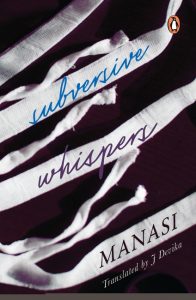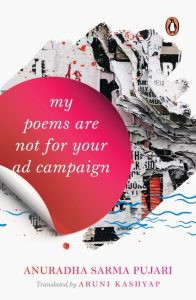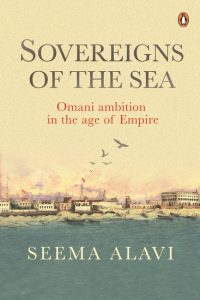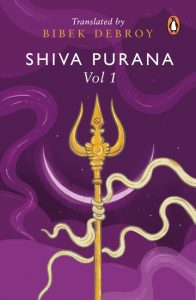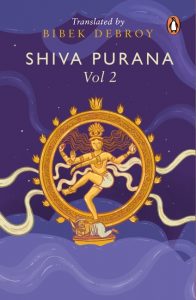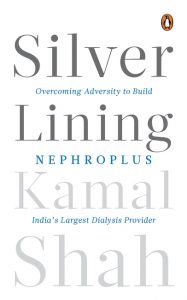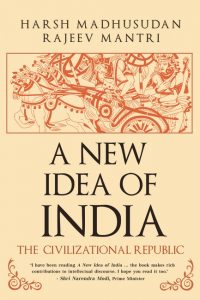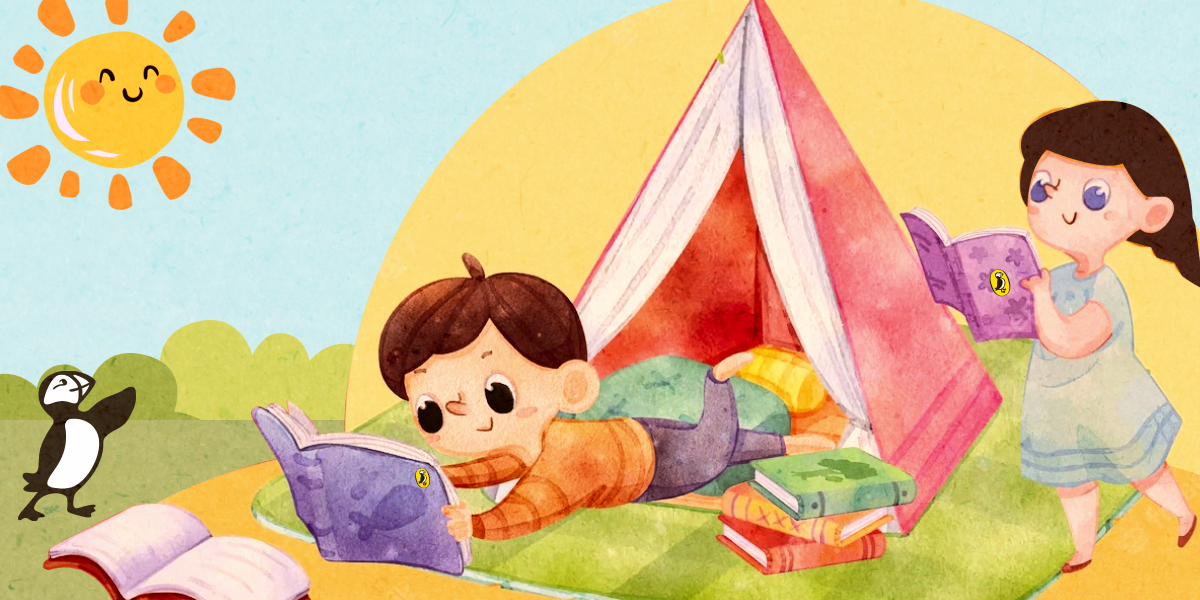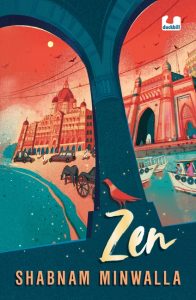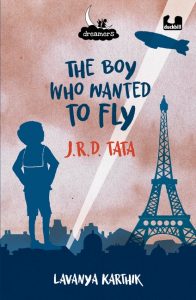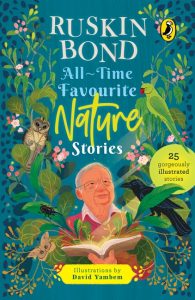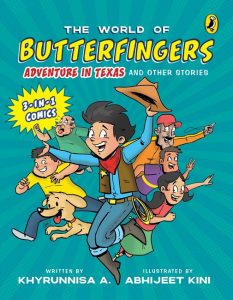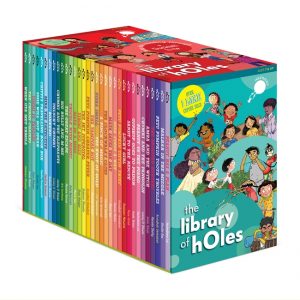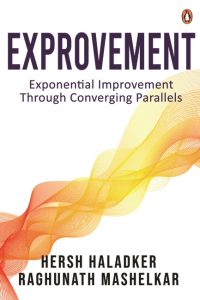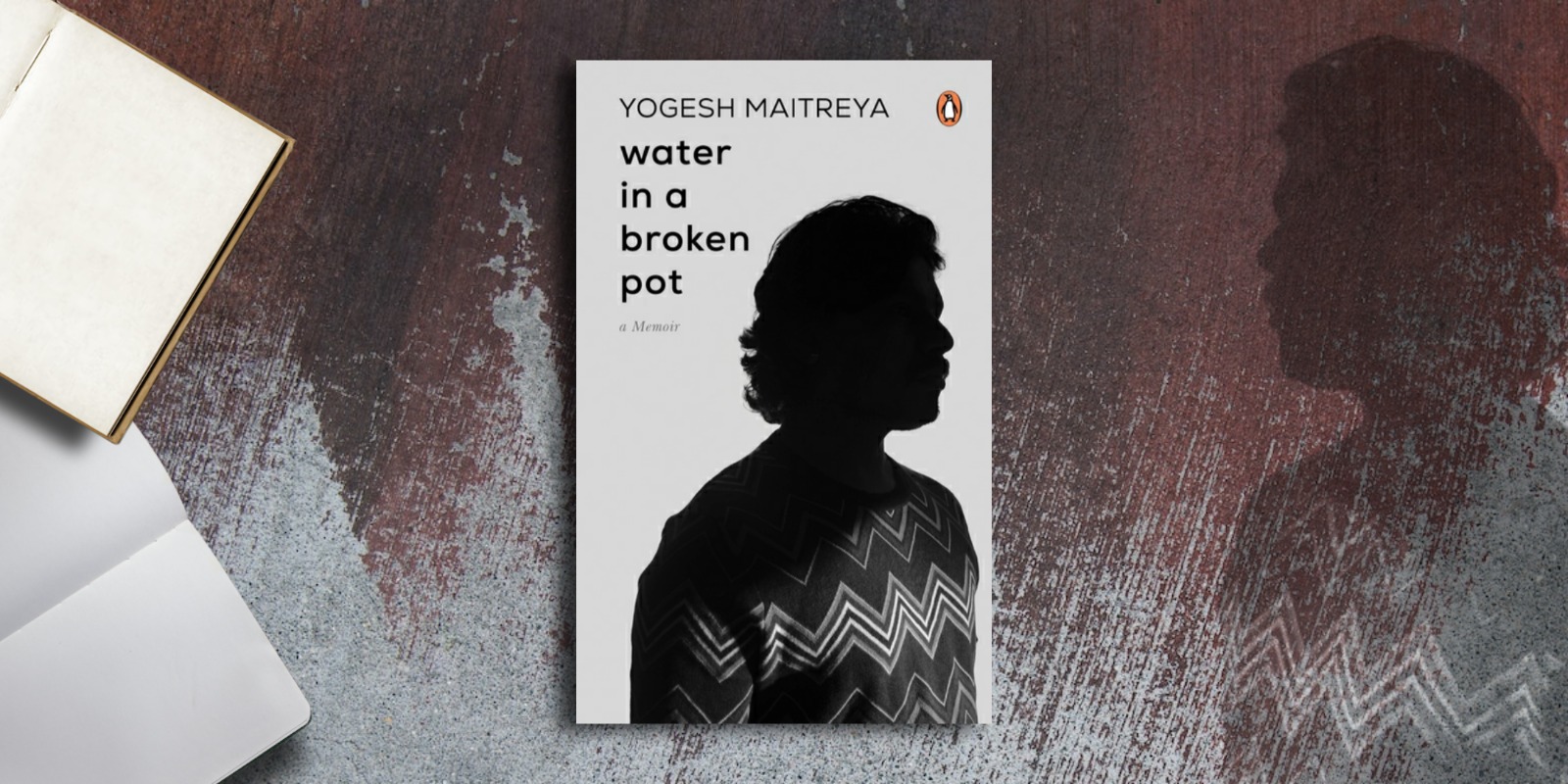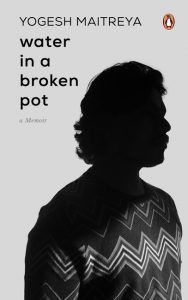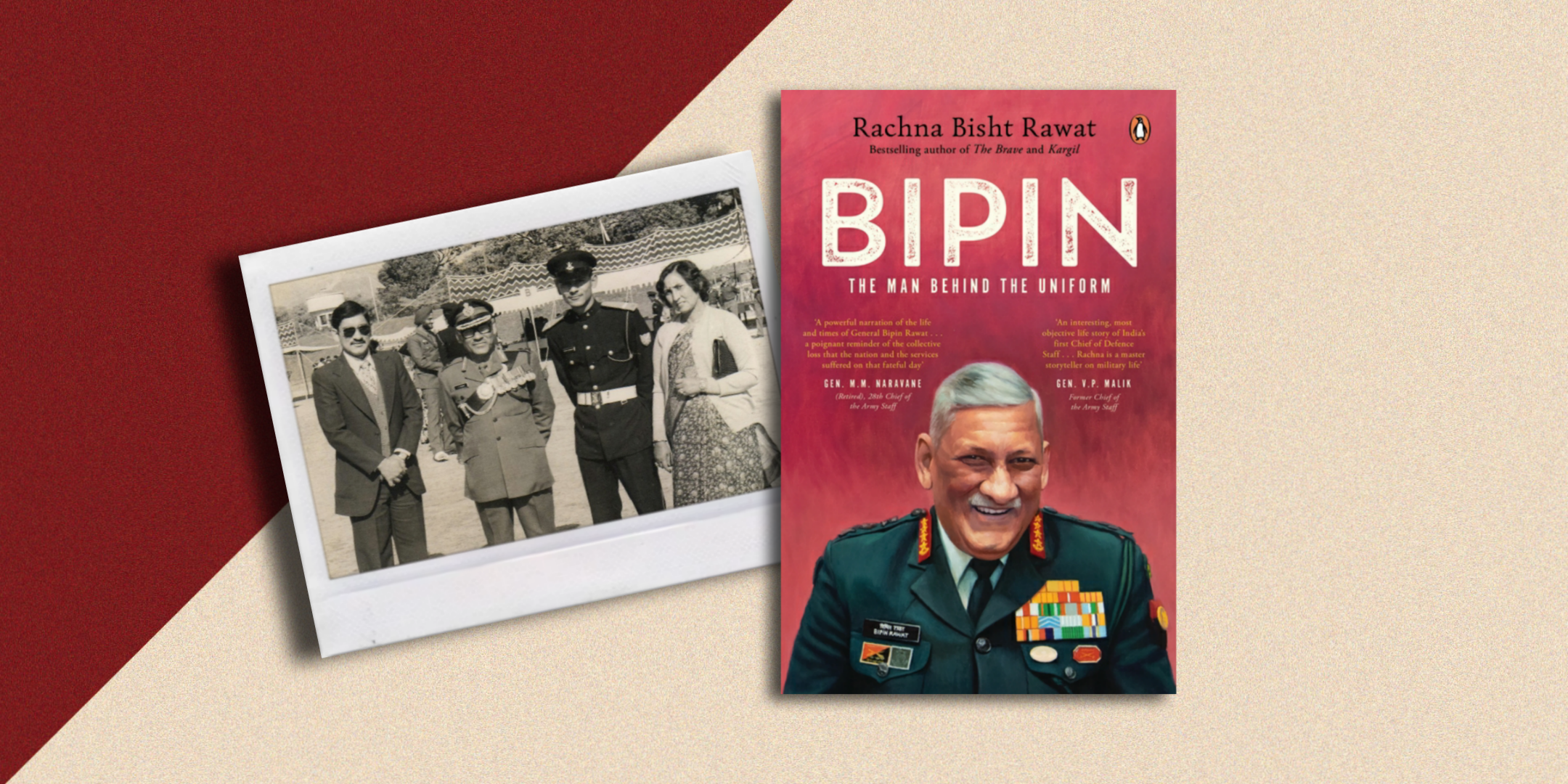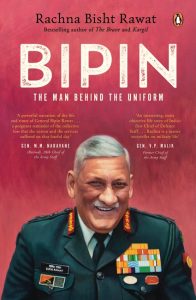Bestselling author Devdutt Pattanaik has penned over 25 books and over 500 articles on the relevance of mythology in modern times. He worked in the healthcare and pharmaceutical industries for 15 years before devoting all his time to his passion for decoding beliefs of all cultures, modern and ancient, located beneath the veneer of rationality. Extremely knowledgeable and exceptionally insightful, Pattanaik also boasts of the added skill of simplifying his mythological accounts into delightful reads that engage young readers. He is the master storyteller of the very popular Fun in Devlok series and Pashu. Here are the must-reads by India’s favourite mythology writer Devdutt Pattanaik:

It is significant that the only character in Hindu mythology, a king at that, to be given the title of ekam-patni-vrata, devoted to a single wife, is associated with the most unjust act of abandoning her in the forest to protect family reputation. This seems a deliberate souring of the narrative, made even more complex by Ram’s refusal to remarry despite the pressure on royalty to produce an heir. The intention seems to be to provoke thought on notions of fidelity, property and self-image. And so mythologist and illustrator Devdutt Pattanaik narrates the Ramayan, drawing attention to the many oral, visual and written retellings composed in different times by different poets, each one trying to solve the puzzle in their own unique way. This book approaches Ram by speculating on Sita-her childhood with her father, Janak, who hosted sages mentioned in the Upanishads; her stay in the forest with her husband who had to be a celibate ascetic while she was in the prime of her youth; her interactions with the women of Lanka, recipes she exchanged, emotions they shared; her connection with the earth, her mother; her role as the Goddess, the untamed Kali as well as the demure Gauri, in transforming the stoic prince of Ayodhya into God.
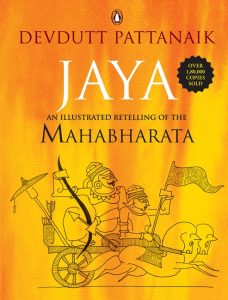
High above the sky stands Swarga, paradise, abode of the gods. Still above is Vaikuntha, heaven, abode of God.
The doorkeepers of Vaikuntha are the twins, Jaya and Vijaya, both whose names mean ‘victory’. One keeps you in Swarga; the other raises you into Vaikuntha. In Vaikuntha there is bliss forever, in Swarga there is pleasure for only as long as you deserve.
What is the difference between Jaya and Vijaya? Solve this puzzle and you will solve the mystery of the Mahabharata. In this enthralling retelling of India’s greatest epic, the Mahabharata, originally known as Jaya, Devdutt Pattanaik seamlessly weaves into a single narrative plots from the Sanskrit classic as well as its many folk and regional variants, including the Pandavani of Chattisgarh, Gondhal of Maharashtra, Terukkuttu of Tamil Nadu, and Yakshagana of Karnataka.
Richly illustrated with over 250 line drawings by the author, the 108 chapters abound with little-known details such as the names of the hundred Kauravas, the worship of Draupadi as a goddess in Tamil Nadu, the stories of Astika, Madhavi, Jaimini, Aravan and Barbareek, the Mahabharata version of the Shakuntalam and the Ramayana, and the dating of the war based on astronomical data. With clarity and simplicity, the tales in this elegant volume reveal the eternal relevance of the Mahabharata, the complex and disturbing meditation on the human condition that has shaped Indian thought for over 3000 years.
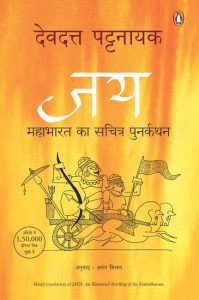
High above the sky stands Swarga, paradise, abode of the gods. Still above is Vaikuntha, heaven, abode of God. The doorkeepers of Vaikuntha are the twins, Jaya and Vijaya, both whose names mean ‘victory’. One keeps you in Swarga; the other raises you into Vaikuntha. In Vaikuntha there is bliss forever, in Swarga there is pleasure for only as long as you deserve. What is the difference between Jaya and Vijaya? Solve this puzzle and you will solve the mystery of the Mahabharata. In this enthralling retelling of India’s greatest epic, the Mahabharata, originally known as Jaya, Devdutt Pattanaik seamlessly weaves into a single narrative plots from the Sanskrit classic as well as its many folk and regional variants, including the Pandavani of Chattisgarh, Gondhal of Maharashtra, Terukkuttu of Tamil Nadu, and Yakshagana of Karnataka. Richly illustrated with over 250 line drawings by the author, the 108 chapters abound with little-known details such as the names of the hundred Kauravas, the worship of Draupadi as a goddess in Tamil Nadu, the stories of Astika, Madhavi, Jaimini, Aravan and Barbareek, the Mahabharata version of the Shakuntalam and the Ramayana, and the dating of the war based on astronomical data. With clarity and simplicity, the tales in this elegant volume reveal the eternal relevance of the Mahabharata, the complex and disturbing meditation on the human condition that has shaped Indian thought for over 3000 years.
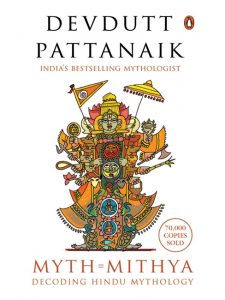
A decoding of Hindu mythology Hindus have one God. They also have 330 million gods: male gods; female gods; personal gods; family gods; household gods; village gods; gods of space and time; gods for specific castes and particular professions; gods who reside in trees; in animals; in minerals; in geometrical patterns and in man-made objects. Then there are a whole host of demons. But no Devil. In this groundbreaking book Dr Devdutt Pattanaik; one of India’s most popular mythologists; seeks an answer to these apparent paradoxes and unravels an inherited truth about life and death; nature and culture; perfection and possibility. He retells sacred Hindu stories and decodes Hindu symbols and rituals; using a unique style of commentary; illustrations and diagrams. We discover why the villainous Kauravas went to heaven and the virtuous Pandavas (all except Yudhishtira) were sent to hell; why Rama despite abandoning the innocent Sita remains the model king; why the blood-drinking Kali is another form of the milk-giving Gauri; and why Shiva wrenched off the fifth head of Brahma. Constructed over generations; Hindu myths serve as windows to the soul; and provide an understanding of the world around us. The aim is not to outgrow myth; but to be enriched and empowered by its ancient; potent and still relevant language.
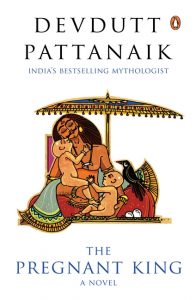
‘I am not sure that I am a man,’ said Yuvanashva. ‘I have created life outside me as men do. But I have also created life inside me, as women do. What does that make me? Will a body such as mine fetter or free me?’
Among the many hundreds of characters who inhabit the Mahabharata, perhaps the world’s greatest epic and certainly one of the oldest, is Yuvanashva, a childless king, who accidentally drinks a magic potion meant to make his queens pregnant and gives birth to a son. This extraordinary novel is his story.
It is also the story of his mother Shilavati, who cannot be king because she is a woman; of young Somvat, who surrenders his genitals to become a wife; of Shikhandi, a daughter brought up as a son, who fathers a child with a borrowed penis; of Arjuna, the great warrior with many wives, who is forced to masquerade as a woman after being castrated by a nymph; of Ileshwara, a god on full-moon days and a goddess on new-moon nights; and of Adi-natha, the teacher of teachers, worshipped as a hermit by some and as an enchantress by others.
Building on Hinduism’s rich and complex mythology-but driven by a very contemporary sensibility-Devdutt Pattanaik creates a lush and fecund work of fiction in which the lines are continually blurred between men and women, sons and daughters, husbands and wives, fathers and mothers. Confronted with such fluidity the reader is drawn into Yuvanashva’s struggle to be fair to all-those here, those there and all those in between.
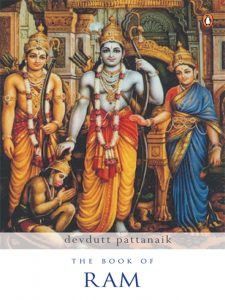
He is Eka-vachani, a king who always keeps his word; Eka-bani, an archer who strikes his target with the first arrow; and Eka-patni, a husband who is eternally and absolutely devoted to a single wife. He is maryada purushottam Ram, the supreme upholder of social values, the scion of the Raghu clan, jewel of the solar dynasty, the seventh avatar of Vishnu, God who establishes order in worldly life. Hindus believe that in stressful and tumultuous times chanting Ram’s name and hearing his tale, the Ramayan, brings stability, hope, peace and prosperity. Reviled by feminists, appropriated by politicians, Ram remains serene in his majesty, the only Hindu deity to be worshipped as a king.
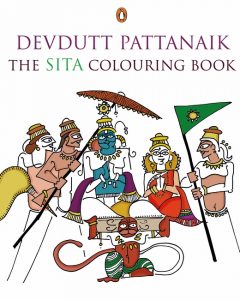
Relive the fabulous story of the Ramayana through 108 illustrations to be coloured in.
The Sita Colouring Book, based on Devdutt Pattanaik’s bestselling retelling of the Ramayana, is a fascinating colouring journey for you to embark on.
From the very beginning of the great epic, the birth of Dashratha’s four sons, to the passing of Lakshman and Ram at the very end, the remarkably simple yet multilayered story of the Ramayana comes alive through Devdutt’s wonderful illustrations.
Rediscover some of the most dramatic moments of the great Indian epic, from Ram’s breaking of the great bow to the abduction of Sita, from the sacking of Lanka to the building of the bridge across the sea, from the slaying of Ravana to Sita’s trial by fire.
Imagine the way the Dandaka forest, Kishkindha, Lanka and Ayodhya might have looked, and colour them in all their glory, along with portraits of unforgettable personages like Hanuman, Jambuvan, Jatayu, Surpanakha, Kumbhakarna and Ravana.
This is a great colouring adventure that readers of all ages will thoroughly enjoy.

Relive the great Indian epic the Mahabharata through 108 illustrations to be coloured in.
The Jaya Colouring Book, based on Devdutt Pattanaik’s bestselling retelling of the Mahabharata, is a tremendous colouring adventure for you to embark on.
From the very beginning of the great epic (which Vyasa narrates as Ganesha writes the story down) till the dramatic end (when Yudhishtira is horrified to discover the Pandavas and Draupadi in Naraka), the entire story of the Mahabharata unfolds through Devdutt’s inimitable illustrations.
Relive the drama of the greatest story ever told, from the birth of the Kauravas and Pandavas to Draupadi’s swayamvara, the game of dice, the years in exile, and finally the great war of Kurukshetra.
Let your imagination run riot as you colour in the battle scenes-Krishna narrating the Bhagavad Gita to Arjuna, Bhima’s slaying of Dusshasana and Duryodhana, and the deaths of Karna, Drona and Bhishma.
This is a great colouring adventure that readers of all ages will thoroughly enjoy.
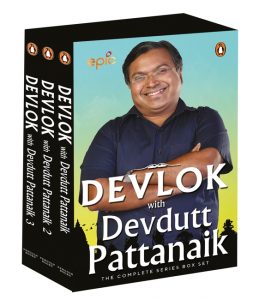
Based on the immensely successful TV show on EPIC channel, this ultimate collection comprises Devlok with Devdutt Pattanaik 1, 2 and 3. Get ready for an entertaining and educational ride with India’s favourite mythologist as he answers all your questions on religions, the holy texts, Indian cultures and more!

· Olympus is the home of the Greek gods, much like Amravati of the Hindu devas.
· Zeus, leader of Olympians, wields a thunderbolt like Indra, and rides an eagle like Vishnu.
· The feats of the Greek hero Heracles, known to Romans as Hercules, reminded many of Krishna, as did his name, ‘Hari-kula-esha’ or lord of the Hari clan.
· The Greek epic of a husband sailing across the sea with a thousand ships to bring his wife, Helen, back from Troy seems strikingly similar to the story of Ram rescuing Sita from Lanka.
Is there a connection between Greek and Hindu mythology then? Does it have something to do with a common Indo-European root? Or maybe an exchange of ideas in the centuries that followed the arrival of Alexander the Great, when Greek emissaries travelled to the kingdoms of Mathura and Magadha?
In this book, mythologist Devdutt Pattanaik turns his attention to ancient Greek tales, and explores a new world of stories. Long have Europeans and Americans retold Indic mythologies. It is time for Indians to reverse the gaze.
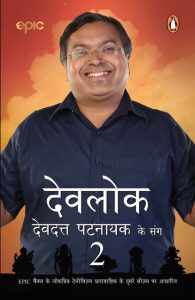
Are the illustrious clans of the Mahabharata from Surya Vansh or Chandra Vansh?
Which yuga does the Ramayana occur in, and does it occur only once?
What do haldi, kumkum, bhasm or chandan signify in a puja thali?
After the sensational response to Season 1 of EPIC Channel’s Devlok with Devdutt Pattanaik, Devdutt invited his viewers and readers to ask him questions about Hindu mythology, which he has answered over thirty thrilling episodes. Prepare to be educated, entertained and moved as Devdutt delves into the exhilarating variety of Hindu mythology.
In this volume, you will discover the difference between dhyan and darshan, aastik and nastik, Surya Vansh and Chandra Vansh. There are amusing stories about your favourite Hanuman and fascinating facts about the dark Vishnu avatars, Varaha and Narasimha. Learn why Lakshmi or Saraswati are always in conflict, and how women have the most intriguing characters in mythological tales.
Journey deeper into the magical world of Hindu mythology with Devdutt, and you’ll never want to turn back.
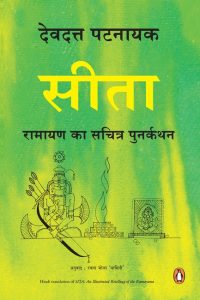
It is significant that the only character in Hindu mythology, a king at that, to be given the title of ekam-patni-vrata, devoted to a single wife, is associated with the most unjust act of abandoning her in the forest to protect family reputation. This seems a deliberate souring of the narrative, made even more complex by Ram’s refusal to remarry despite the pressure on royalty to produce an heir. The intention seems to be to provoke thought on notions of fidelity, property and self-image. And so mythologist and illustrator Devdutt Pattanaik narrates the Ramayan, drawing attention to the many oral, visual and written retellings composed in different times by different poets, each one trying to solve the puzzle in their own unique way. This book approaches Ram by speculating on Sita-her childhood with her father, Janak, who hosted sages mentioned in the Upanishads; her stay in the forest with her husband who had to be a celibate ascetic while she was in the prime of her youth; her interactions with the women of Lanka, recipes she exchanged, emotions they shared; her connection with the earth, her mother; her role as the Goddess, the untamed Kali as well as the demure Gauri, in transforming the stoic prince of Ayodhya into God.
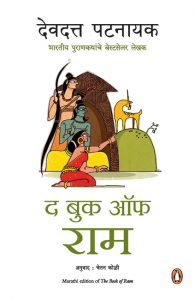
He is Eka-vachani, a king who always keeps his word; Eka-bani, an archer who strikes his target with the first arrow; and Eka-patni, a husband who is eternally and absolutely devoted to a single wife. He is maryada purushottam Ram, the supreme upholder of social values, the scion of the Raghu clan, jewel of the solar dynasty, the seventh avatar of Vishnu, God who establishes order in worldly life. Hindus believe that in stressful and tumultuous times chanting Ram’s name and hearing his tale, the Ramayan, brings stability, hope, peace and prosperity. Reviled by feminists, appropriated by politicians, Ram remains serene in his majesty, the only Hindu deity to be worshipped as a king.
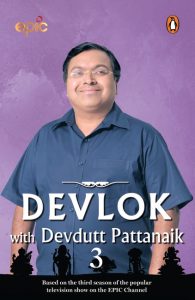
Where did the name Radha come from?
When did Christianity first come to India?
What is the connection between sanskar and dharma?
After the enormous success of the first two seasons of EPIC Channel’s Devlok with Devdutt Pattanaik, India’s favourite mythologist is back with a third instalment to answer these questions and more, this time delving deeper into Hinduism and other religions as well!
In this volume, you will read about the various versions of the Ramayana found across Asia. There are chapters on Buddhism and Jainism and their fascinating histories. Learn where the concept of marriage comes from, the reasons behind the many riti-riwaz in Hinduism and the place of fathers and fatherhood in Indian mythology, among myriad other topics and lesser-known tales-all tackled by Devdutt in a Q&A format.
Covering over fifteen informative and inspiring episodes, this volume is a heady mix of education and entertainment.
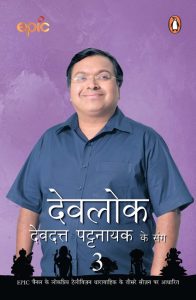
Where did the name Radha come from?
When did Christianity first come to India?
What is the connection between sanskar and dharma?
After the enormously successful runs of the first and second seasons of EPIC Channel’s Devlok with Devdutt Pattanaik, and their book editions, the trailblazer of Hindu mythology Devdutt Pattanaik is back with a third instalment to answer these questions and more! Covering over fifteen informative and inspiring episodes, this volume is a heady mix of education and entertainment. The show delves into myriad topics and lesser-known tales and questions that will be revisited by Devdutt in a Q&A format, making mythology more interesting for everyday audiences.
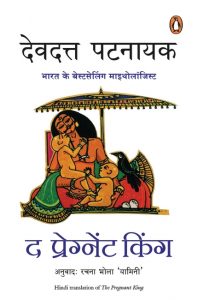
‘I am not sure that I am a man,’ said Yuvanashva. ‘I have created life outside me as men do. But I have also created life inside me, as women do. What does that make me? Will a body such as mine fetter or free me?’
Among the many hundreds of characters who inhabit the Mahabharata, perhaps the world’s greatest epic and certainly one of the oldest, is Yuvanashva, a childless king, who accidentally drinks a magic potion meant to make his queens pregnant and gives birth to a son. This extraordinary novel is his story.
It is also the story of his mother Shilavati, who cannot be king because she is a woman; of young Somvat, who surrenders his genitals to become a wife; of Shikhandi, a daughter brought up as a son, who fathers a child with a borrowed penis; of Arjuna, the great warrior with many wives, who is forced to masquerade as a woman after being castrated by a nymph; of Ileshwara, a god on full-moon days and a goddess on new-moon nights; and of Adi-natha, the teacher of teachers, worshipped as a hermit by some and as an enchantress by others.
Building on Hinduism’s rich and complex mythology-but driven by a very contemporary sensibility-Devdutt Pattanaik creates a lush and fecund work of fiction in which the lines are continually blurred between men and women, sons and daughters, husbands and wives, fathers and mothers. Confronted with such fluidity the reader is drawn into Yuvanashva’s struggle to be fair to all-those here, those there and all those in between.
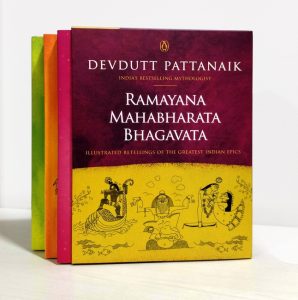
An enthralling retelling of India’s greatest epic, the Mahabharata, Jaya seamlessly weaves into a single narrative plots from the Sanskrit classic as well as its many folk and regional variants. With clarity and simplicity, the tales in this elegant volume reveal the eternal relevance of the Mahabharata and the complex and disturbing meditation on the human condition that has shaped Indian thought for over 3000 years.
Sita approaches Ram and the Ramayana by speculating on the titular character: her childhood with her father, Janaka, who hosted sages mentioned in the Upanishads; her stay in the forest with her husband, who had to be a celibate ascetic while she was in the prime of her youth; her interactions with the women of Lanka, recipes she exchanged, the emotions they shared; her role as a goddess, the untamed Kali as well as the demure Gauri, in transforming the stoic prince of Ayodhya into God.
The Bhagavata is the story of Krishna, known as Shyam to those who find beauty, wisdom and love in his dark complexion. Shyam tells the story of Krishna’s birth and his death, bringing together the fragments of this great epic composed over thousands of years, first as the Harivamsa, then as the Bhagavata Purana, and finally as the passionate songs of poet-sages in various regional languages.

Shyam: The wisdom of the Bhagavata for the modern reader
Sita: An unheard voice from the Ramayana
Jaya: Folklore from the epic Mahabharata
Olympus: Indian parallels for classic Greek myths
Eden: A unique take on Abrahamic lore
For curious first-time readers of Indian mythology, this new collection of Devdutt Pattanaik’s five best-selling books is the perfect gift.
Take an epic voyage with Devdutt through ancient and mythological worlds. This captivating, richly illustrated narrative will regale readers with the many legends and parables that make our collective cultural heritage. Through decades of research, Devdutt decodes ancient epic tales and presents them with a blend of simplicity, candidness, and elegance. This box-set is sure to ring in the festive spirit this holiday season.
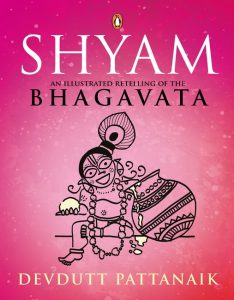
In the forest of insecurities, is it possible to discover humanity through pleasure?
Can we stop seeing each other as predator, prey, rival or mate, and rediscover ourselves as lovers?
Does the divine reside in sensual delight, in emotional intimacy and in aesthetic experience?
Yes, yes, yes.
That is the promise of the Bhagavata.
The Bhagavata is the story of Krishna, known as Shyam to those who find beauty, wisdom and love in his dark complexion. It is the third great Hindu epic after the Mahabharata and the Ramayana. However, this narration was composed in fragments over thousands of years, first as the Harivamsa, then as the Bhagavata Purana, and finally as the passionate songs of poet-sages in various regional languages.
This book seamlessly weaves the story from Krishna’s birth to his death, or rather from his descent to the butter-smeared world of happy women to his ascent from the blood-soaked world of angry men.
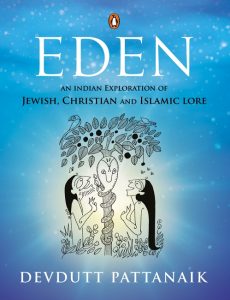
Eden is the garden of happiness that humankind lost when Adam and Eve the first human couple, disobeyed the one true god, i.e., God, and ate the fruit of the forbidden tree. To this garden all humanity shall return if we accept God’s love and follow God’s law. It represents paradise in Abrahamic lore, which emerged over 4,000 years ago in the Middle East and has since spread to every corner of the world in three forms: Judaism, Christianity and Islam.
Like the Ramayana and Mahabharata, Jewish, Christian and Islamic tales too are cultural memories and metaphors, i.e. mythologies. They seek to make life meaningful by establishing a worldview based on one God, one life, and one way of living based on God’s message transmitted through many messengers. But these stories contrast Indian mythologies that are rooted in rebirth, where the world is without beginning or end, where there are infinite manifestations of the divine, both within and without, personal and impersonal, simultaneously monotheistic, polytheistic and atheistic.
Eden explores the vast world of Abrahamic myths from a uniquely Indian prism, through storytelling that is intimate but not irreverent, and to introduce readers to the many captivating tales of angels, demons, prophets, patriarchs, judges and kings. It also retells stories from Mesopotamian, Egyptian and Zoroastrian mythologies that in?uenced Abrahamic monotheism over time.
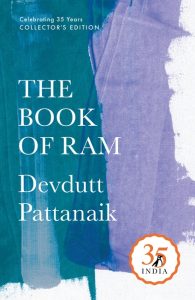
He is Eka-vachani, a king who always keeps his word; Eka-bani, an archer who strikes his target with the first arrow; and Eka-patni, a husband who is eternally and absolutely devoted to a single wife. He is maryada purushottam Ram, the supreme upholder of social values, the scion of the Raghu clan, jewel of the solar dynasty, the seventh avatar of Vishnu, God who establishes order in worldly life. Hindus believe that in stressful and tumultuous times chanting Ram’s name and hearing his tale, the Ramayan, brings stability, hope, peace and prosperity. Reviled by feminists, appropriated by politicians, Ram remains serene in his majesty, the only Hindu deity to be worshipped as a king.
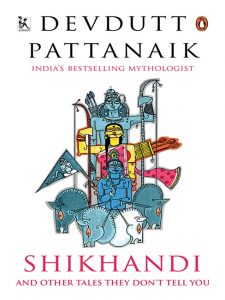
Patriarchy asserts men are superior to women
Feminism clarifies women and men are equal
Queerness questions what constitutes male and female
Queerness isn’t only modern, Western or sexual, says mythologist Devdutt Pattanaik. Take a close look at the vast written and oral traditions in Hinduism, some over two thousand years old, and you will find tales of:
Shikhandi, who became a man to satisfy her wife
Mahadeva, who became a woman to deliver a devotee’s child
Chudala, who became a man to enlighten her husband
Samavan, who became the wife of his male friend
and many more . . .
Playful and touching—and sometimes disturbing—these stories when compared with tales of the Mesopotamian Gilgamesh, the Greek Ganymede, the biblical Sodom or the Chinese ‘cut sleeve’ Emperor reveal the unique Indian way of making sense of queerness.
Devdutt Pattanaik’s new book builds on profound ideas that our ancestors shared but which we have rarely inherited.
This book has content for mature audiences. Discretion advised.









